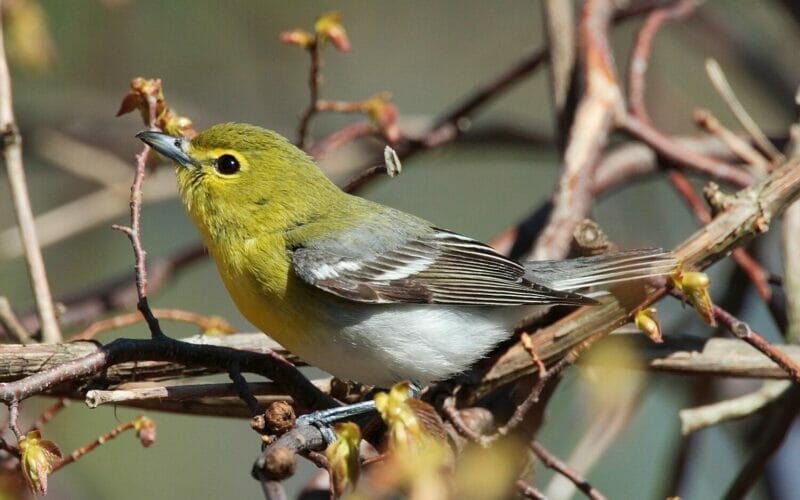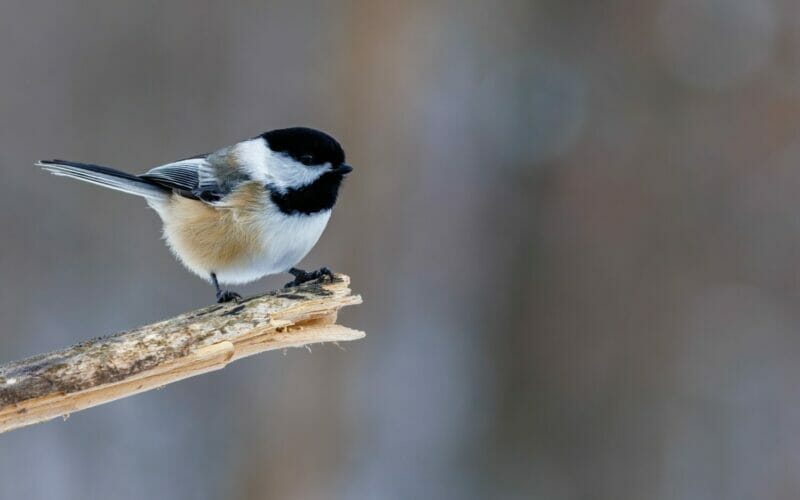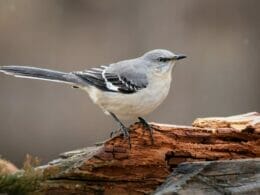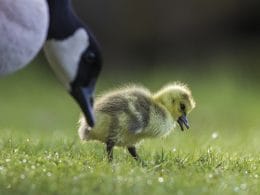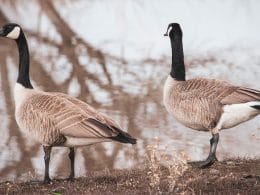When we see the word pigeon, we generally think of feral birds that are a pest in urban areas. But those pigeons are actually related to Rock Doves. Are there other pigeon or dove species in the U.S.? Are they as unpleasant as the feral variety? In this post, we investigate what a pigeon is, where they live, and how they nest.
Pigeon Species
In the United States, there are the following species named pigeon. Escapee and very old sightings have been excluded.
| Name of Pigeon | Range |
Band-tailed Pigeon (Patagioenas fasciata) | Common in western areas, except for deserts |
White-crowned Pigeon (Patagioenas leucocephala) | Restricted to Florida and occasionally along the Gulf of Mexico |
Red-billed Pigeon (Patagioenas flavirostris) | Rare reports from the far south of Arizona and Texas |
| Scaly-naped (PigeonPatagioenas squamosa) | Single sighting in Florida |
Dove Species
In the United States there are the following species named dove. Escapee and very old sightings have been excluded.
| Name of Dove | Range |
| Mourning Dove (Zenaida macroura) | Common across the continental U.S., present in Alaska, and introduced into Hawaii |
White-winged Dove (Zenaida asiatica) | Present across the continental U.S., less common across the north and more common in the south-west |
| Inca Dove (Columbina inca) | Regular sightings across the south, from Alabama to California |
| Rock Dove (Columba livia) | Feral populations across the whole of the United States |
| White-tipped Dove (Leptotila verreauxi) | Sightings restricted to southwestern Texas |
| Common Ground Dove (Columbina passerina) | Regularly seen across the south of the continental U.S. with some sightings up the Eastern Seaboard |
| Ruddy Ground Dove (Columbina talpacoti) | Uncommon in the far southwest |
| Rufous Turtle Dove (Streptopelia orientalis) | Very rare – few sightings in the western continental U.S. |
| Zenaida Dove (Zenaida aurita) | Occasional sightings in the far south of Florida |
Ruddy Quail-Dove (Geotrygon montana) | Less than 10 sightings in far southwestern Texas and Florida |
Key West Quail-Dove (Geotrygon chrysia) | Rare sightings in Florida |
Pigeons and Doves
So, there is the complete list of doves and pigeons seen in the United States. There are 4 species of pigeon and 11 doves. Interestingly, all of them except for the Rock Dove are classed by eBird as native. The entire Rock Dove population is referred to as feral. Let’s look into that a bit more.
Rock Dove (Columba livia)
Where can the Rock Dove be found?
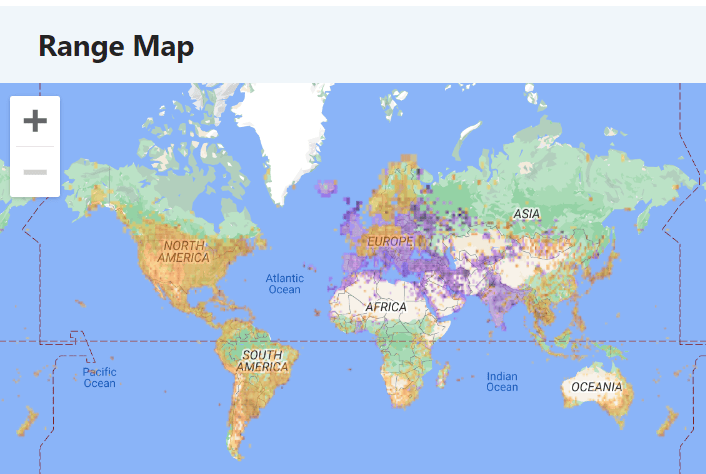
As we can see from the eBird Range Map above, the Rock Dove is spread right across the globe. The purple markings indicate where it is native and the orange, where it has been introduced and is now classed as feral. Even in its native areas, there is a good proportion of the Rock Dove population that is treated as feral.
Interestingly, the feral variety is present in places like Greenland, Alaska, and the far north of Russia. I wonder who introduced it to these places! More commonly, it appears in urban and rural areas but not in desert or tundra climates.
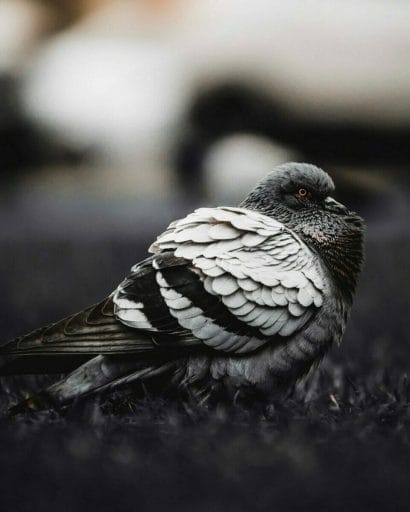
The feral Rock Dove is now distinct from the native species. It now has its own scientific name to clarify the distinction. There are now these species of pigeon:
Rock Dove (Columba livia)
Feral Rock Dove (Columba livia domestica)
Feral Pigeon (Columba livia forma urbana)
How has the Rock Dove spread so far?
The feral population of the Rock Dove, which we will now refer to as pigeons, is found in most areas of the world. They got there for 2 reasons:
Firstly, pigeons were domesticated by humans centuries ago and as early as the 12th century, they were used to carry messages. Humans recognized how smart and interesting these birds were and kept them as caged or working birds. As such, they were transported where ever explorers and settlers went.
Secondly, captive or messenger pigeons escaped and settled where ever they ended up. They were adaptable to new environments, including those filled with humans, and have thrived ever since.
Why is the pigeon so successful in urban areas?
The Rock Dove, ie, the native and wild species, lives and nests in the crevices of steep cliff faces, rocky areas and canyons. It is not much of a stretch to transfer them to cities with tall buildings and urban areas with plenty of potential nesting sites, particularly as they were already used to human company. These pigeons tend to take over abandoned buildings especially, as they have everything the birds need to reproduce.
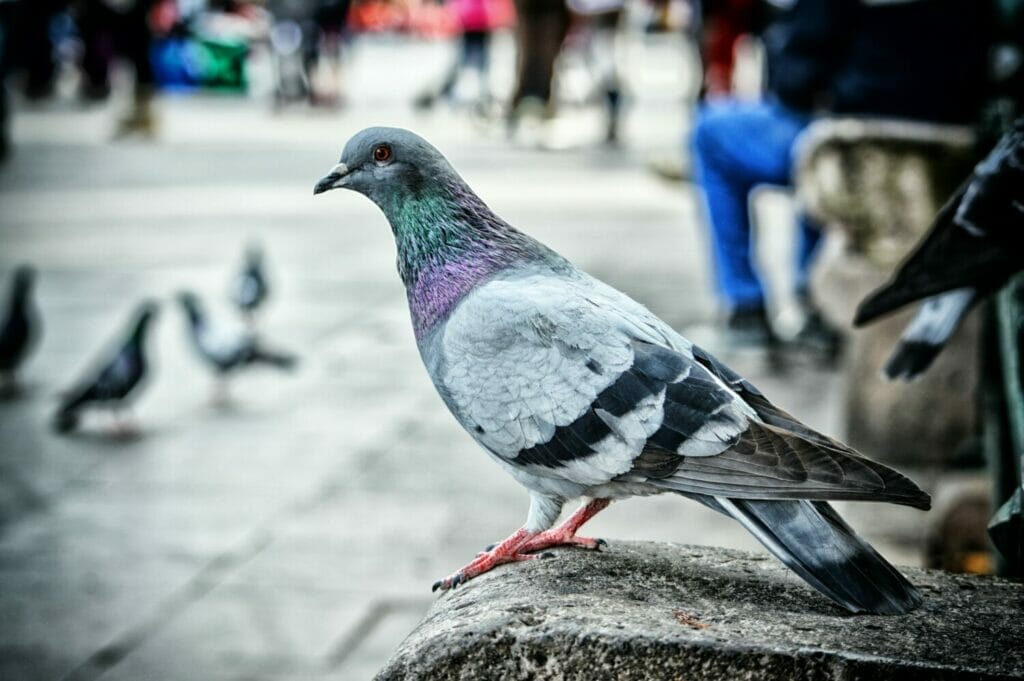
Rock Dove and Feral Pigeon Nests
For native Rock Dove and Feral Pigeon species, building nests is still the same process. They look for a good site that is a crevice/ledge or roof cavity/window ledge and build a ‘traditional’ looking nest. Wild populations will use natural materials like grasses and twigs to build a round shaped nest. Feral populations in urban areas use what ever substitutes they can, as illustrated below where the birds have collected nails instead of twigs and twine instead of grass.
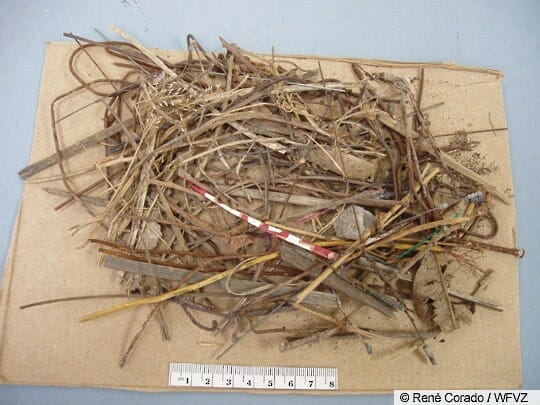
The Problem with Pigeons
While the feral pigeon populations in urban areas are less than we might think, there often looks to be a lot of them because they stick together in groups. They might nest in buildings and on roof tops but they also like open areas and so are often seen in city parks and plazas.
But that isn’t the big problem. It is poop. Pigeon poop is nasty. In fact it is more than nasty, it is dangerous. Pigeon poop contains pathogens that are poisonous to humans if ingested. That is why people always wear protective gear when cleaning it up.
Even worse are pigeon nesting areas. They tend to congregate in and nestling poop is removed to outside the nest. This may build up to really problematic proportions.

With a concentration of pigeons in cities comes a concentration of their poop, which at best is unsightly. However, it isn’t really the fault of the pigeons. Who hasn’t fed them while sitting in a park? Who is responsible for them being there in the first place? Who has provided ideal artificial breeding places for them?
Simple answer: humans.
How to stop Pigeons nesting in cities
Now that we have a problem with pigeons reproducing in cities, we have to find a solution.
Culling
Culling birds still goes on across the world. In some countries permits are required and others they are fair game (so to speak). Sometimes they are shot, poisoned or trapping and euthanized. None of these solutions are very pleasant and the killing of innocent creatures is increasingly unpopular with the general public.
Deterrents
Lots of buildings employ different methods to keep pigeons from nesting on and in their buildings. Most visible are the bird spikes like the ones below.
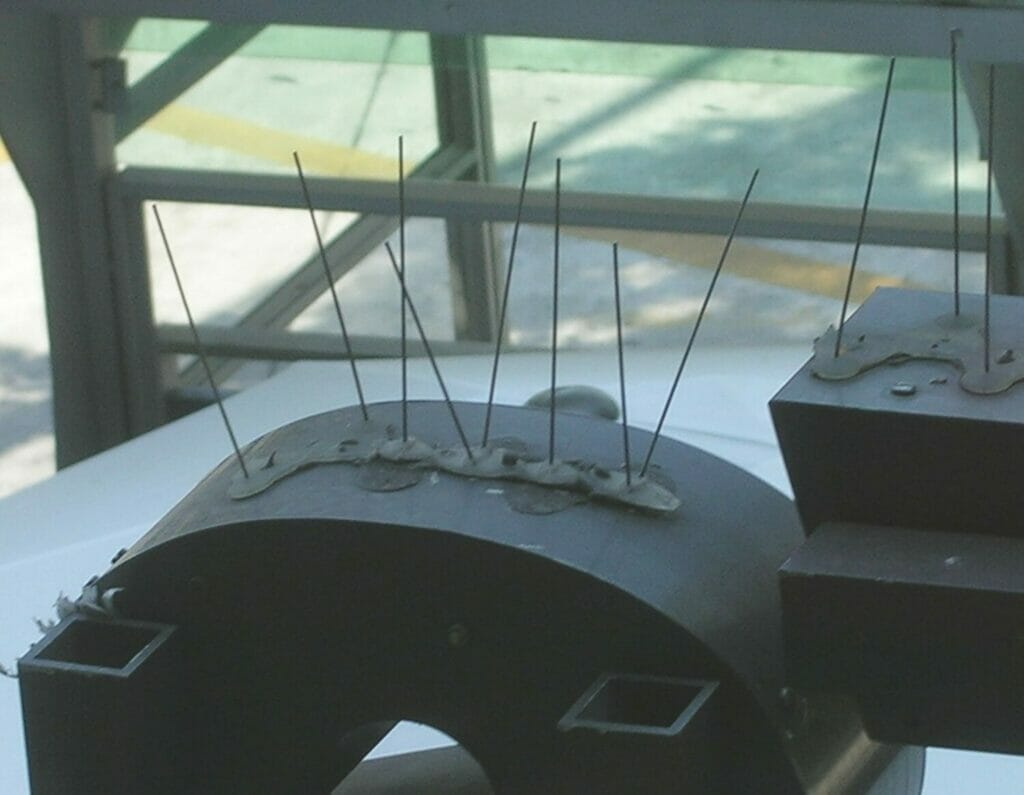
Trapping
In Melbourne there is a structure that has been specifically designed to encourage pigeons to actually nest in it.
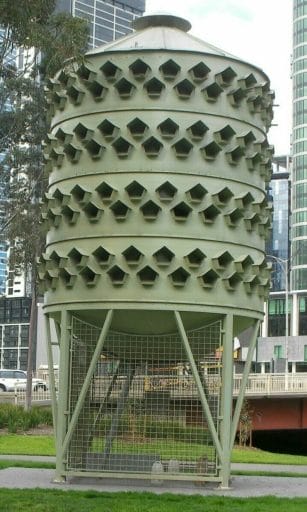
Once the pigeons have laid eggs which were replaced with false eggs. Pigeons are not stupid, however, and it did not work. A small part of me wants to laugh about that!
Contraception
Some countries provide food with contraception chemicals in them.
Food Reduction
By cleaning up our cities and removing waste food in the form of rubbish, we can reduce the pigeons’ reliance on available scraps, encouraging them to go elsewhere. Might make the place look nicer too.
Conclusion
Call them Rock Doves or Feral Pigeon, like all other creatures, their purpose is to nest and reproduce. Again, like all other creatures, their range, habitat, food and nesting locations are heavily influenced by humans. If there is a problem with where pigeons nest, it is our fault. It is easy to then say that we should find a humane solution but that is a bit hypocritical – who would complain about the eradication of rats? Like most modern problems, there is no simple solution. Until then pigeons will continue to poop in our cities and build nests where we don’t want them to.
I hope you enjoyed reading about pigeon nests. Let us know your thoughts on the topic.
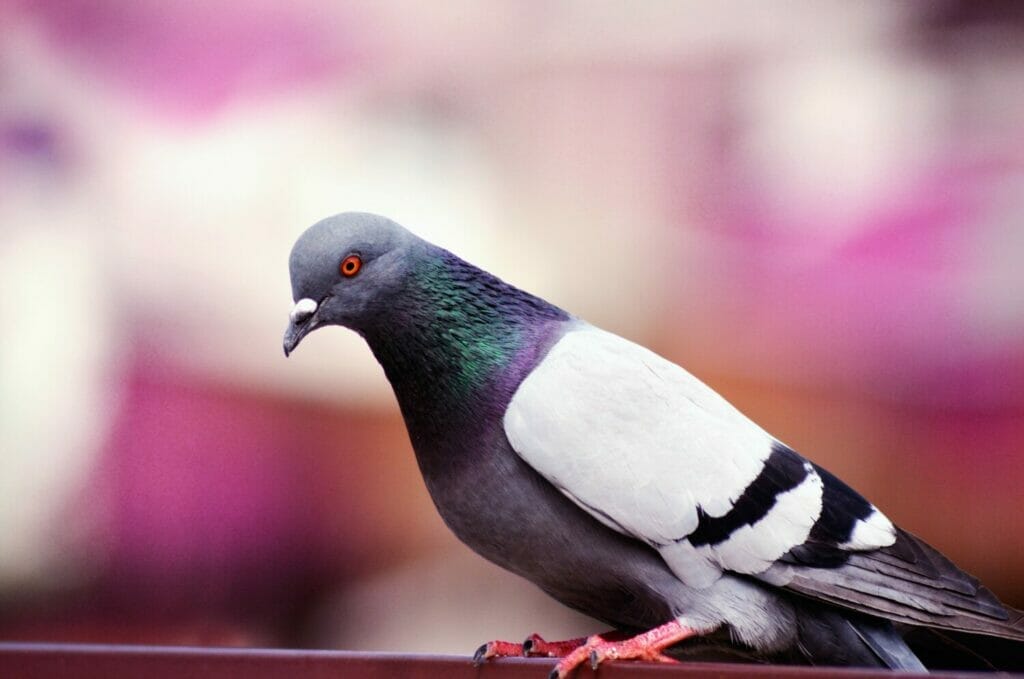
FAQ
There are 2 big problems with feral pigeons. Firstly, they carry and deposit disease in our cities. Secondly, their success comes at the expense of native species as they take resources from them.
It is thought that feral pigeons carry more diseases than rats as well as mites. They are also much more present (as is their poop) in our everyday lives.
The same kinds of places that they nest – abandoned buildings, roof cavities, and building ledges.





